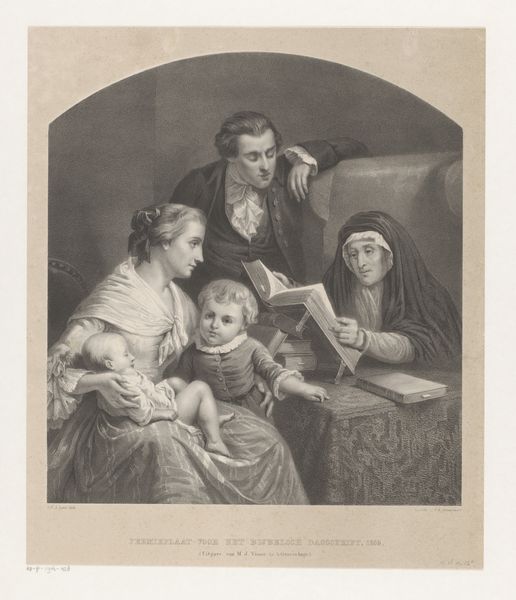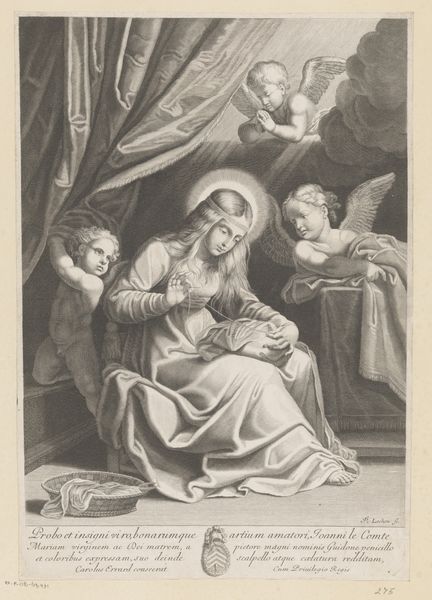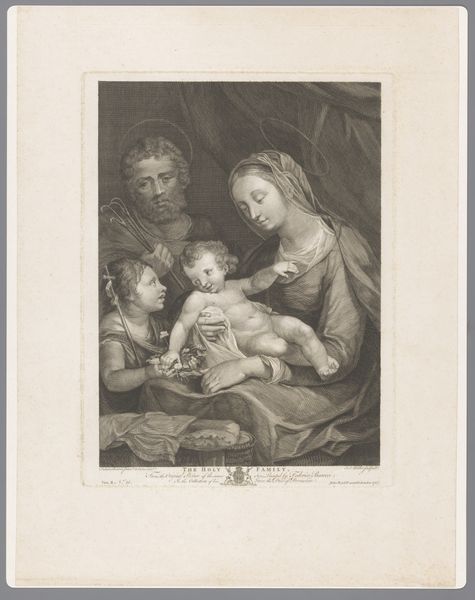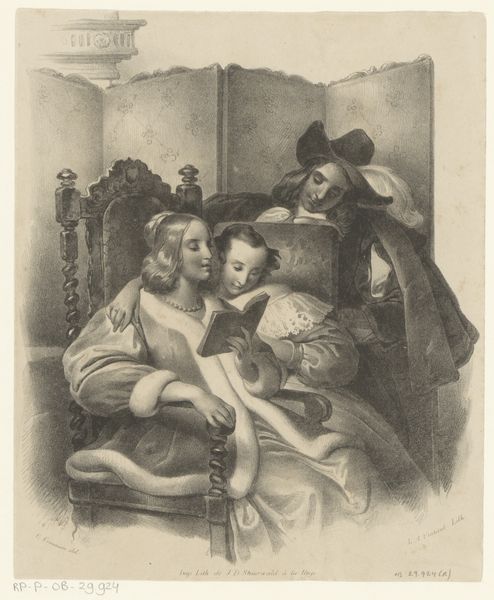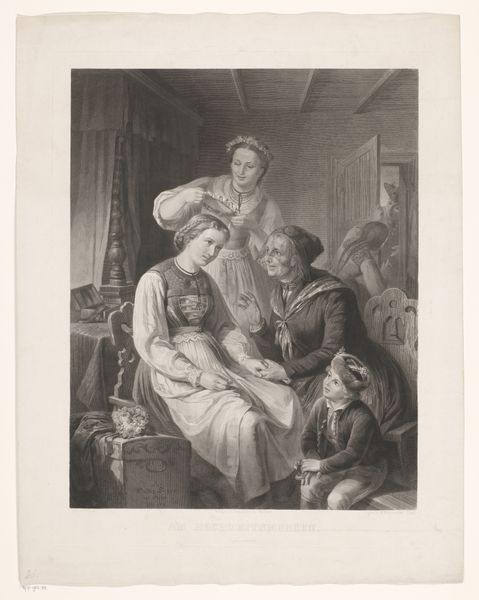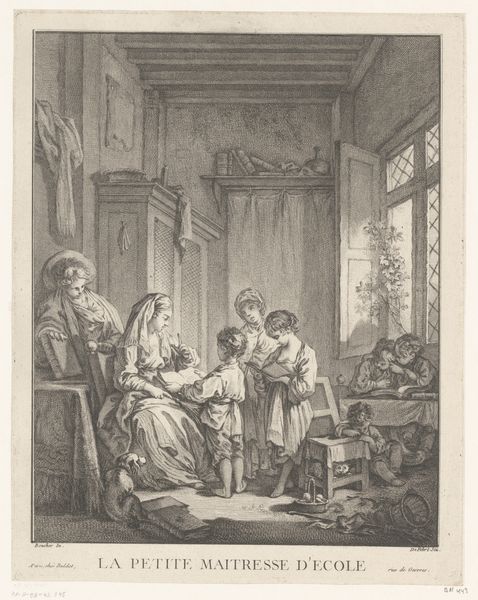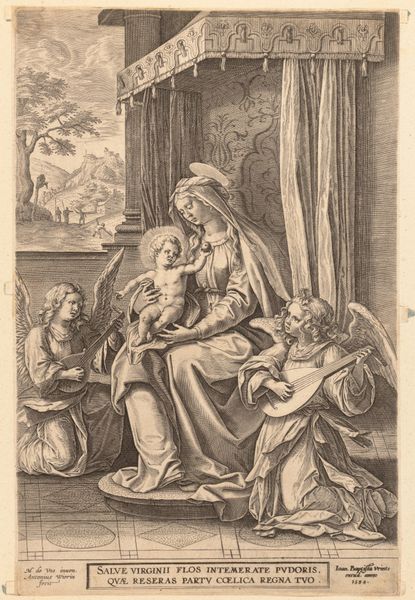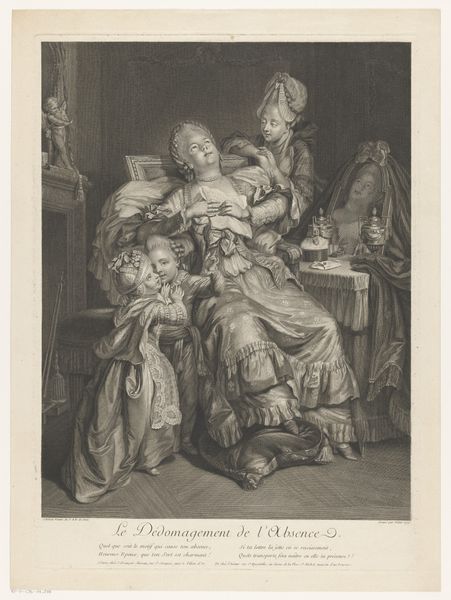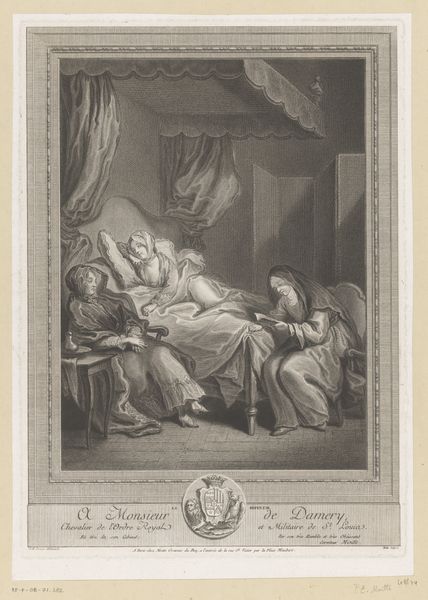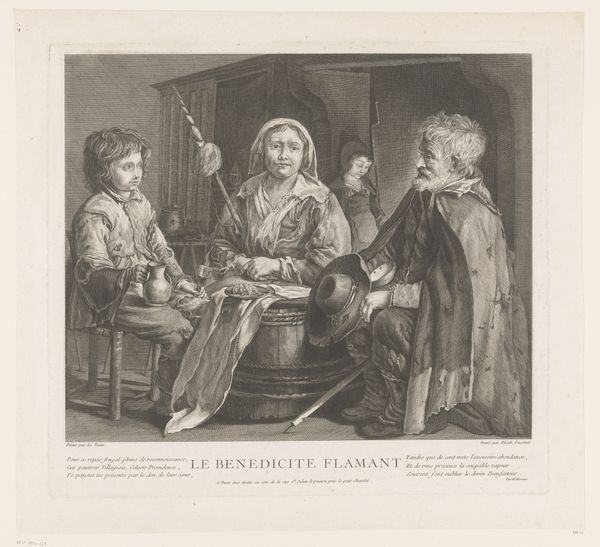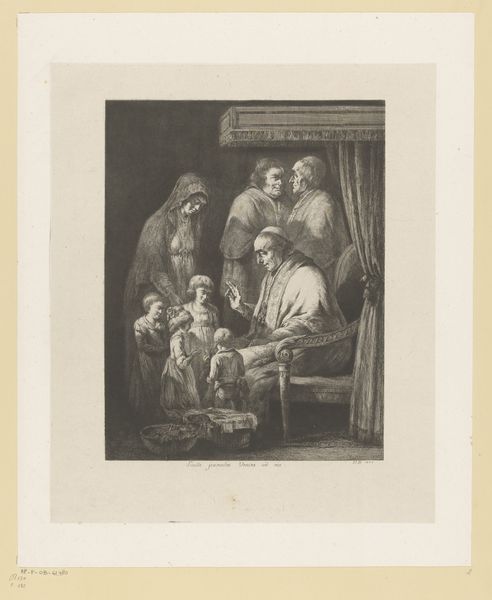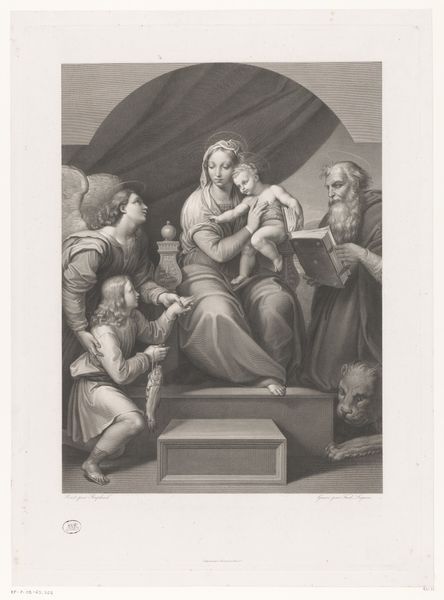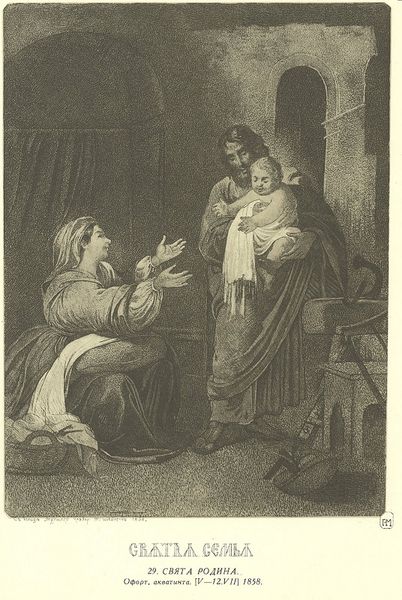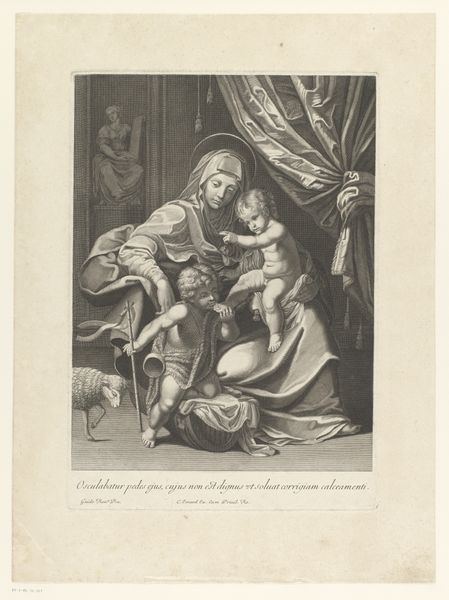
print, engraving
#
portrait
#
print photography
#
narrative-art
# print
#
genre-painting
#
academic-art
#
engraving
#
realism
Dimensions: height 622 mm, width 588 mm
Copyright: Rijks Museum: Open Domain
Curator: This is “Familie aan de bijbelstudie,” or "Family Studying the Bible," an engraving by Auguste Adrien Jouanin, created around 1855. What strikes you upon first viewing? Editor: Immediately, I am struck by its monochrome stillness. The composition, bathed in gentle light, focuses primarily on the tonal gradations achieved through the printmaking technique, emphasizing form and texture. The family members' faces and clothes seem to melt together due to lack of distinct tones, which affects its emotional appeal. Curator: The artwork presents a fascinating glimpse into 19th-century family life and religious practices. Its depiction speaks to the cultural emphasis on religious devotion within the domestic sphere. The very act of a family gathered around the Bible served as a signifier of moral uprightness and social respectability. Think of the construction of gender roles at this moment! Editor: From a formal standpoint, Jouanin’s masterful use of line and hatching creates a remarkable illusion of depth and volume. Observe the texture of the fabric and skin in each character—I find this most evident in the children! I am interested to examine this use of line, contrast, and how light shapes each individual form, but also in relation to the others in the family. Curator: Indeed. The generational composition speaks volumes—an elder matriarch, the parents, and children. There's a transmission of values occurring before our very eyes, underlining a patriarchal system where religious knowledge and practice are implicitly controlled. It asks: who has access to and interprets religious doctrine, and what power does this confer? Editor: Jouanin positions the family within a closed, arch-shaped boundary. Considering this with respect to form, I want to focus on that geometric element and its significance. Is this just an compositional method, or are we given an insight into the emotional dimensions and atmosphere between the sitters themselves? Curator: And that enclosed form reinforces ideas of family insularity during this era, an ideology deeply rooted in class and religious identity. Editor: What an image! Focusing on the elements of form and their use really enhanced my experience and understanding. Curator: By combining insights on how form relates to these sociohistorical forces at work, perhaps we’ve expanded our understanding of 19th-century French society.
Comments
No comments
Be the first to comment and join the conversation on the ultimate creative platform.
